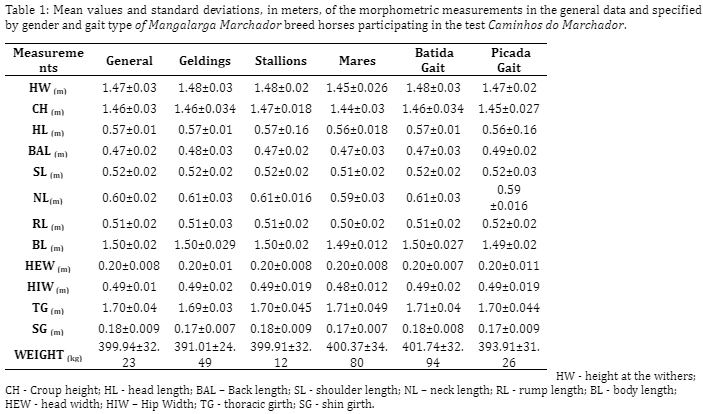Association of phenotypical characteristics with performance of Mangalarga Marchador horses during official competitions of endurance, working equitation and gait assessment
DOI:
https://doi.org/10.21708/avb.2023.17.4.11885Resumo
Horses of the Mangalarga Marchador breed have traditionally been selected for their morphology and gait pattern, being for comfortable to ride over long periods of time and during ranch work. Meanwhile, the athletic side of the breed has been much overlooked, especially regarding the endurance and working equitation competitions. In this study, 31 Mangalarga Marchador horses were evaluated during the national competition Caminhos do Marchador. The referred competition was carried out in three stages, with the first being an endurance stage, the second stage a working equitation stage, and the third and last stage was a gait evaluation, where the gait of the horses were assessed subjectively by an official jury. Twenty-five morphometric measurements and indexes of these animals were taken after the competition and were then statistically analyzed. A correlation between gender and athletic performance was found, with geldings having the best results, and females having the worst results. The type of gait also influenced the final ratings, with horses presenting batida gait having better placements. Smaller horses had better results than tall horses, while there was no age interference in the final ratings.
Downloads

Downloads
Publicado
Edição
Seção
Licença
Copyright (c) 2024 Acta Veterinaria Brasilica

Este trabalho está licenciado sob uma licença Creative Commons Attribution 4.0 International License.
Autores que publicam na Acta Veterinaria Brasilica concordam com os seguintes termos: a) Autores mantém os direitos autorais e concedem à revista o direito de primeira publicação, com o trabalho simultaneamente licenciado sob a Licença Creative Commons Attribution que permite o compartilhamento do trabalho com reconhecimento da autoria e publicação inicial nesta revista. b) Autores têm autorização para assumir contratos adicionais separadamente, para distribuição não-exclusiva da versão do trabalho publicada nesta revista (ex.: publicar em repositório institucional ou como capítulo de livro), com reconhecimento de autoria e publicação inicial nesta revista. c) Autores têm permissão e são estimulados a publicar e distribuir seu trabalho online (ex.: em repositórios institucionais ou na sua página pessoal) a qualquer ponto antes ou durante o processo editorial, já que isso pode gerar alterações produtivas, bem como aumentar o impacto e a citação do trabalho publicado (Veja O Efeito do Acesso Livre).


 Esta obra está licenciada com uma Licença
Esta obra está licenciada com uma Licença 